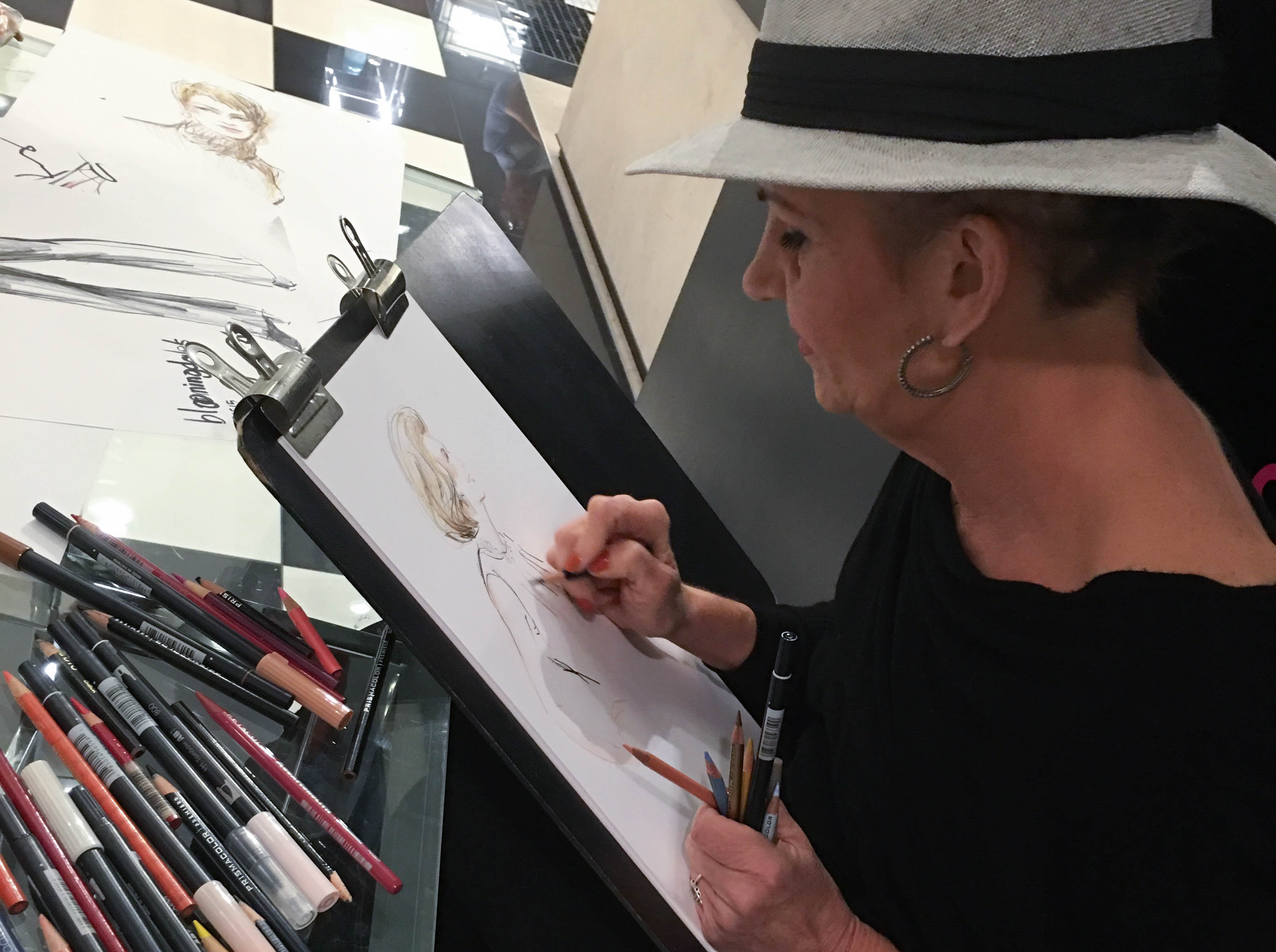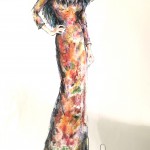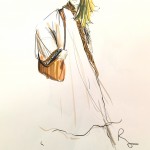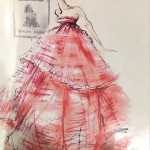By Lily Singh
Tucked behind a gray fedora, Rosemary Fanti’s eyes floated between her subjects and her canvas as she crafted her live fashion illustrations of customers in the fragrance department at Bloomingdale’s on Michigan Avenue.
As Fanti illustrated, person after person stood by to admire her work. Shoppers who may have otherwise been in a rush paused to comment on the detailed artwork that took form right in front of their eyes.
I watched her illustrate a customer in her favorite floor-length gown – a magical fantasy since the woman was wearing a skirt and blouse. Then I overheard another conversation take place behind me. A daughter explained to her mom how Fanti could illustrate them in whatever outfits they pleased and even change their hair! The beauty of fashion illustration, I quickly figured out, is that it beat Photoshop even before Photoshop was an option.
“All these illustrations that I did of these people, of these customers, it never existed before and it’s a really unique thing and hopefully they’ll treasure it, hopefully they’ll frame it, hopefully they’ll remember their experience at Bloomingdale’s or at Neiman’s or wherever I’m at,” Fanti said.
Fanti is a fashion illustrator based in Chicago, an artist whose journey into the fashion world began at a young age.
“As a child I was very interested in fashion…and I loved to draw, even on the wall of my bedroom,” Fanti said. “My mother sent me to The School of the Art Institute [of Chicago] on Saturdays and then in the summers.”
She earned her degree in fashion design from the Fashion Institute of Technology in New York City and began working with designers to translate their ideas onto paper. After five years of freelancing in New York City, she moved back to her hometown.
“When I moved back to Chicago, since Chicago’s more of an advertising town than fashion, I found most of my work in advertising.”
But fashion illustration remained her first love.
“I was always fascinated with the illustrators from the 50’s and 40’s, you know, when it was at its height,” Fanti said.
Fashion illustrations filled top magazine covers during the early 1900’s. Conde Nast’s website notes that Vogue began replacing fashion illustrations with photo illustrations in 1932.
“Nowadays they don’t use illustration as much as they used to and that was only because printing photography – the process – wasn’t as good as it is now and that’s why they used so many illustrations in catalogs and all that,” Fanti said.
In a day when people have cameras always handy, even in their cell phones, a photo doesn’t seem to have the same wow factor that it once did. And that’s a good thing for Fanti.
“So now it’s like the opposite now it’s like ‘Wow an illustration, somebody actually did it with their hand,’” Fanti said. “So that seems to be a more personal thing in this era of impersonal things or digitally produced.”
Fanti has worked for a number of corporate clients, including Bloomingdale’s, Neiman Marcus, Macy’s and Saks Fifth Avenue.
“We are always looking to infuse creative and memorable moments into our customers shopping experience and Rosemary’s illustrations are the perfect way to do that,” said Alison Fichter, public relations and special events manager at Bloomingdale’s Chicago.
Working for major retailers has allowed Fanti to participate in various special events where the brand would like to enrich a customer’s experience.
“She has participated with us at a Chloe Drew handbag event where she sketched the client with the Chloe Drew handbag that they had selected,” said Tina Koegel, public relations manager at Neiman Marcus on Michigan Avenue. “She has also participated with our shoe events where she will sketch a client holding one of their favorite pair of shoes and the clients absolutely love it.”
Customers at events like these are able to walk away with a piece of art to accompany their purchase.
As someone who has been a witness to fashion over the years, Fanti has seen a distinct change take place in the way people dress.
“It’s so individualized and I think back when I was little, when you went out, you had little gloves on and people dressed to go shopping or they dressed to go on an airline,” Fanti said. “And people had uniforms, and the stewardesses and the nurses back then were in a particular type of uniform.”
Today’s street fashion has a much more relaxed look and feel. A quick outfit for a shopping trip can be as simple as a tee paired with jeans and Converse shoes. But that may not always match the outfit someone might imagine themselves wearing.
“I notice when I illustrate live how many of these women wanted me to put them in something different. Maybe a really cool cocktail dress – they still like to dress up.”
“I think when you draw fashion it’s important to emphasize certain things – the eyes, the lips, you want to accentuate the positive,” Fanti said. “You want to accentuate it as though you’re drawing an idealized version of yourself – and if you want reality, you take a selfie.”
The models who work the runways in fashion shows are tall and lean so it only makes sense that fashion illustrations take on this same feel.
“Traditionally when you’re drawing a human, it’s about 7 heads high. If you’re doing fashion, you want to do 10 heads high – elongated,” she said. “Fashion looks better elongated, exaggerated in that way.”
As an artist, Fanti has many tools at her disposal, with a preference for certain mediums depending on her end goal.
“I pretty much use these ink brushes and Prismacolor pencils and I use a makeup case to carry them all,” Fanti said. “I love working in pastels and watercolor, but it’s messy when I do live events.”
Fanti loves fashion and loves drawing people and she has found a career that allows her to live at the intersection of both. Watching her in her element and interacting with the people she illustrates, one thing is clear – she loves what she does.
“I think going back to when I was a little kid, loving fashion…this is like a dream job for me,” she said. “It’s like I can’t imagine doing anything else.”







